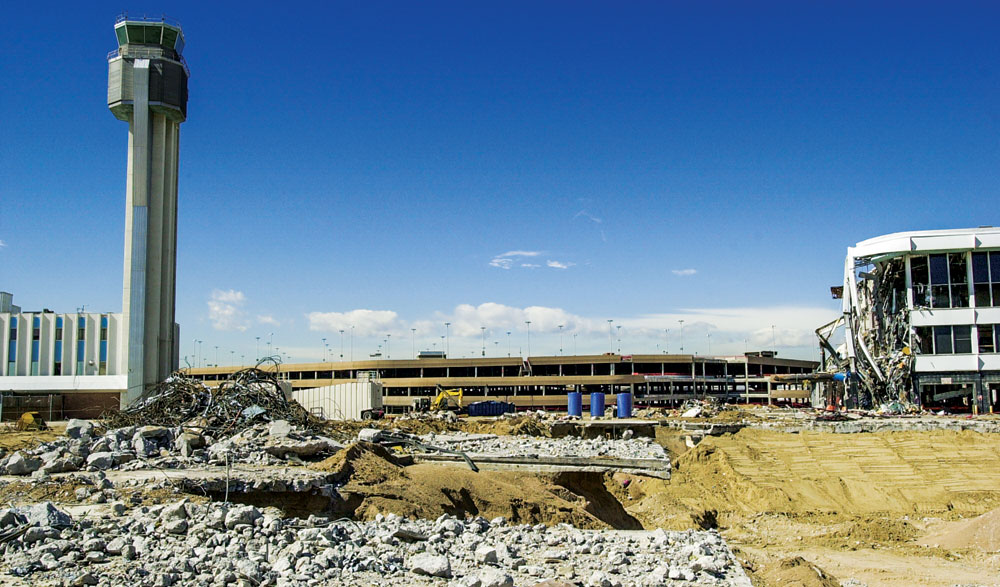
Stapleton International Airport closed in 1995 and demolition of the buildings soon began. Front Porch file photo by Steve Larson
Twenty-five years ago, the first edition of Front Porch was published to share information about the development of Denver’s newest neighborhood on the site of the former Stapleton International Airport.

A formation of 757s on the last day of operation at Stapleton International Airport, Feb. 27, 1995. Photo courtesy of John Haman
The conversation around what would replace the old runways and airport buildings had started years earlier, with neighbors and community leaders lending their voices. They didn’t have a crystal ball to see what the Stapleton neighborhood—renamed Central Park in 2020—would become or how Denver would evolve.
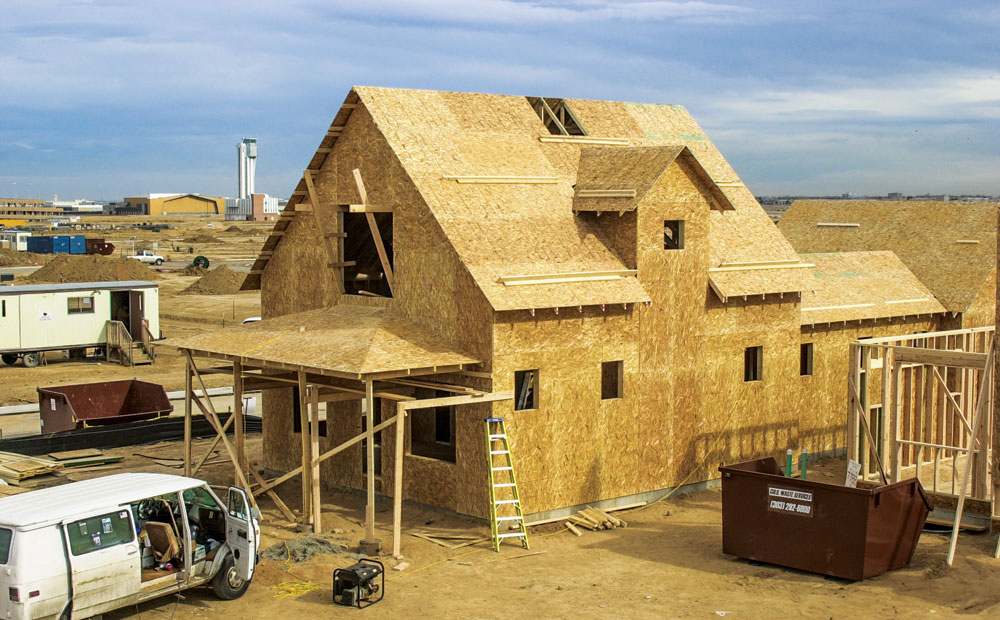
The first home was built on the former airport property in 2002 at E. 25th Ave. Front Porch file photo by Steve Larson
For this issue, Front Porch talked with some of the people who were part of the newspaper’s first edition, people who helped plan an ambitious project that is still under development in 2025.
These city leaders and community activists helped advise the Stapleton Development Corp. (SDC), a non-profit organization formed by the City as a vehicle to lease and sell Stapleton.
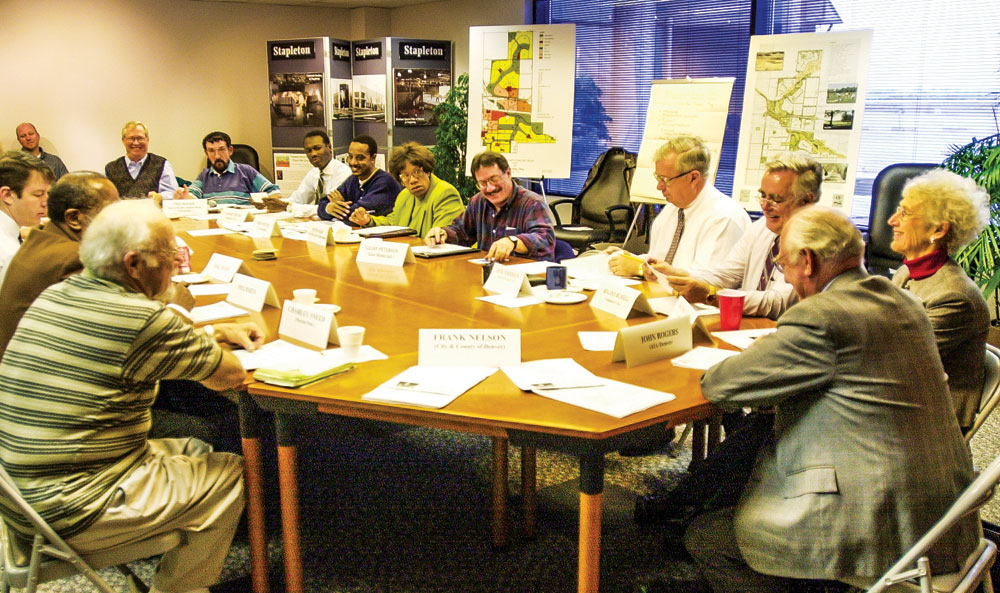
A meeting of the Citizens Advisory Board in 2000. Front Porch file photo by Steve Larson
Forest City Enterprises—the master developer of the new 4,700-acre neighborhood—was the original publisher of Front Porch, with a goal of keeping residents and potential residents of the new neighborhood informed about development, everything from new housing to retail to roads.
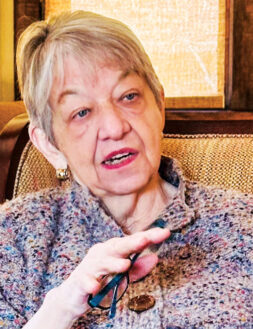
Alice Kelly in March at her Park Hill home.
The April 2000 inaugural issue of the newspaper quoted Alice Kelly, a former president of the League of Women Voters of Denver who served on the SDC’s Citizens’ Advisory Board.
“Stapleton’s future and the future of Denver are closely intertwined,” Kelly said then. “The quality of both will be shaped by our continuing commitment to create and preserve neighborhoods that are diverse, wonderful places to live.”
She and other community leaders hoped for a neighborhood area where people could afford to live and work.
Front Porch recently revisited Kelly at her Park Hill home, where she had carefully laid out t-shirts and pamphlets saved from those early years. She talked about that 2000 quote and what she would say now.
“I still agree with it (the quote), because we are still connected. I think some things have changed, like the price of housing has changed, and is just off the charts.”
High housing prices aren’t specific to Central Park, she adds. “Capitol Hill has changed; Congress Park has changed. Park Hill, Mayfair, Lowry have changed. It’s all different. You would have had to have a crystal ball to be able to project that in 2025, houses would be so expensive.”
Kelly says in Central Park’s early days, she and others pushed for rapid construction of affordable housing— “housing for teachers and police officers and firefighters and clerks who work for restaurants.”

Terry Whitney, original member of the SDC
Citizens’ Advisory Board.
But as it turned out, she says, affordable housing “wasn’t the first housing that went up. It was the market-rate housing that went up first.”
Terry Whitney, who also was on the SDC’s advisory board when Front Porch debuted, says that “no reasonable person would say the goals set by Forest City in collaboration with SDC and the CAB (Citizens’ Advisory Board) on affordable housing for both residential and rental categories have been met.”
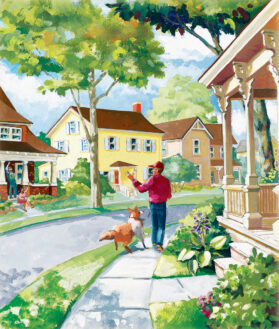
An illustration representing the new Stapleton neighborhood was printed in the Fall 2000 edition of Front Porch.
But he says the master developer did an “admirable job” in trying to meet those goals. “Building affordable housing in Denver County and pretty much anywhere in the state of Colorado is very hard to do, even with the best intentions.”
Whitney would have liked more help from the City to meet the affordable housing goals. He says that while the Northeast Denver Housing Center and other builders worked collaboratively to build multiple projects, he feels that “the City did little. Even things like permitting were always characterized by red tape and delays, which are criticisms friends in business still tell me is typical of the City and County of Denver.”
Looking back, Whitney says he is amazed overall that the visionaries behind the neighborhood could deliver. There was competition for construction workers in the early 2000s, a recession, and concerns about the availability of water.
“Having designated a third of the 4,700 acres as open space, I wondered multiple times if we’d have water available to assist in that effort. To date we’ve been lucky in that regard.”
Kelly and Whitney agree there was always a desire to create seamlessness between Central Park and bordering neighborhoods in Denver and Aurora. Whitney says that goal was achieved best in the education area, with residents tutoring at nearby schools while also working to get schools on the Stapleton grounds up and running.
In the past decade, Central Park extended into northwest Aurora, with several hundred new homes built in the 80010 ZIP code, and Stanley Marketplace opened in 2016, creating a gathering space for neighbors and small businesses.
Front Porch began operating as an independent, small business when Carol Roberts and Steve Larson took over the paper from Forest City at the end of 2009. They recently retired and the paper is now owned and published by longtime employee Christie Gosch.
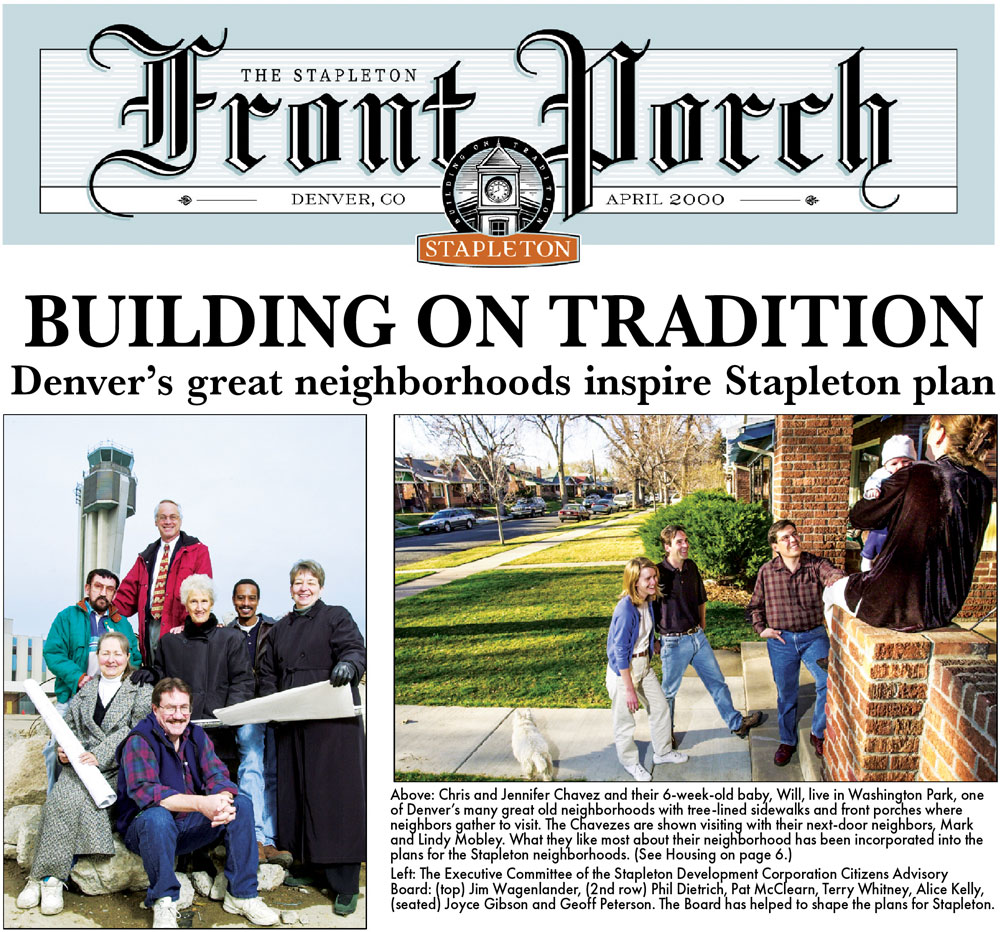
The top half of the first edition of Front Porch, which was published in April 2000. Front Porch file photos by Steve Larson
Gosch says the statement of purpose published in the first issue is still true today: “To keep you informed about the transformation of the fifth busiest airport in the world into one of the premier, mixed-use and pedestrian-friendly, urban communities in the nation.”
The neighborhood has grown, and while development is still a key issue, there are now more stories about the people and places that make the area survive and thrive.
Front Porch is grateful for the people who share their stories, our readers, and the businesses that continue to support local journalism.
Community leader Whitney adds, “As a former member and co-chair of the Citizens’ Advisory Board and current member of the SDC board, I want to extend my sincere thanks to Front Porch for its presence and coverage of issues facing the community over the decades. The paper is one of several reasons this community remains vibrant, notwithstanding all the challenges facing the City & County of Denver.”
Here’s to 25 more years.
Archives of all back issues of Front Porch can be found at frontporchne.com/news/pdf-archives





I love The Front Porch! The paper (in print and online) has played a huge role in helping to make Central Park more than just a lot of people living in close proximity–we’re a thriving community and a great place to live!
Thank you Jeff! We appreciate your support.
-Linda Kotsaftis-Editor